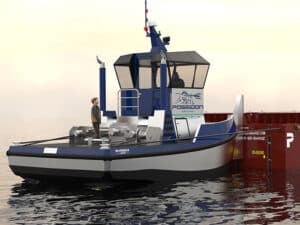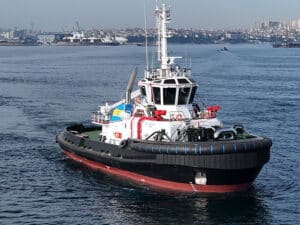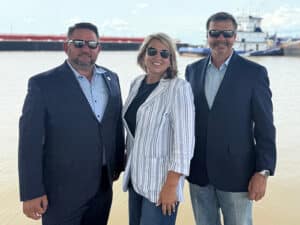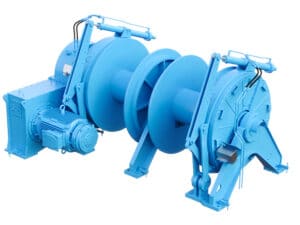
San Francisco Bar Pilots take delivery of new Camarc 22
Written by Nick Blenkey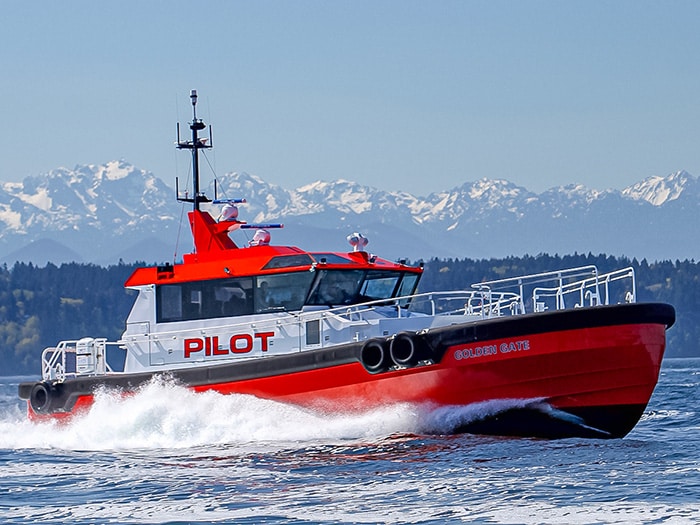
San Francisco Bar Pilots new vessel meets current CARB regulations, but next series will face even tougher limits. [Photo: Camarc Design]
The San Francisco Bar pilots have recently taken delivery of a new pilot boat from Snow & Company, Seattle. Called Golden Gate, it is the latest all-aluminum pilot vessel in the Camarc 22 pilot series from U.K.-based Camarc Design and replaces a current boat of the same name.
The updates to the series include the Camarc refined hull for improved comfort and fuel efficiencies and a features USEPA Tier 4 engines have an SCR system. . A Fender Innovations fender system with integrated tires has been fitted. MAN 1,200 hp 12 V engines and Hamilton HTX52 waterjets power the efficient hull to 30+ knots, and a Humphree active ride control system optimizes trim and reduces motions at speed.
While the Tier 4 engines meet current California Air Resource Board (CARB) requirements, those requirements have since gotten tougher — and more expensive to meet. Under the new Commercial Harbor Craft Regulations (CHC) regulations, the California Air Resources Board (CARB) will require that an additional diesel particulate filter (DPF) system be installed in 2028. This is over and above the USEPA emissions requirements.
In a recent blog post the San Francisco Bar Pilots noted that, further down the road, they will be contracting for three additional vessels. The vessels are currently being designed by Glosten, with the builder yet to be selected.
“The cost of the build program is anticipated to be $55 million and is necessary to meet the compliance standards of CARB’s new Commercial Harbor Craft Regulations,” says the association. “Scheduled to arrive in 2024 and 2025, these new vessels will make the San Francisco Bar Pilots the first pilot association in California to procure vessels that meet such compliance.”
“SFBP has engaged with CARB in this multiyear rulemaking process and will continue to work with stakeholders and regulators on the technological feasibility of the CHC regulation and its impact on California’s harbor craft operators,” says the association. “Due to the challenges of implementing the CHC rule within the compliance timeline established by CARB, we believe that the standards and accompanying enforcement procedures are not consistent with section 209 of the Clean Air Act. We look forward to further discussions on alleviating implementation challenges as well as exploring opportunities for a sustainable funding stream to achieve the state’s environmental goals.”
How far the SFBP gets in its “further discussions” remains to be seen. The CHC regulations limit emissions below what is required by the EPA for Tier 4 and must be met for any vessel considered a harbor craft by CARB operating in harbor and coastal California waters. They were implemented despite broad industry warnings that they were unworkable.

